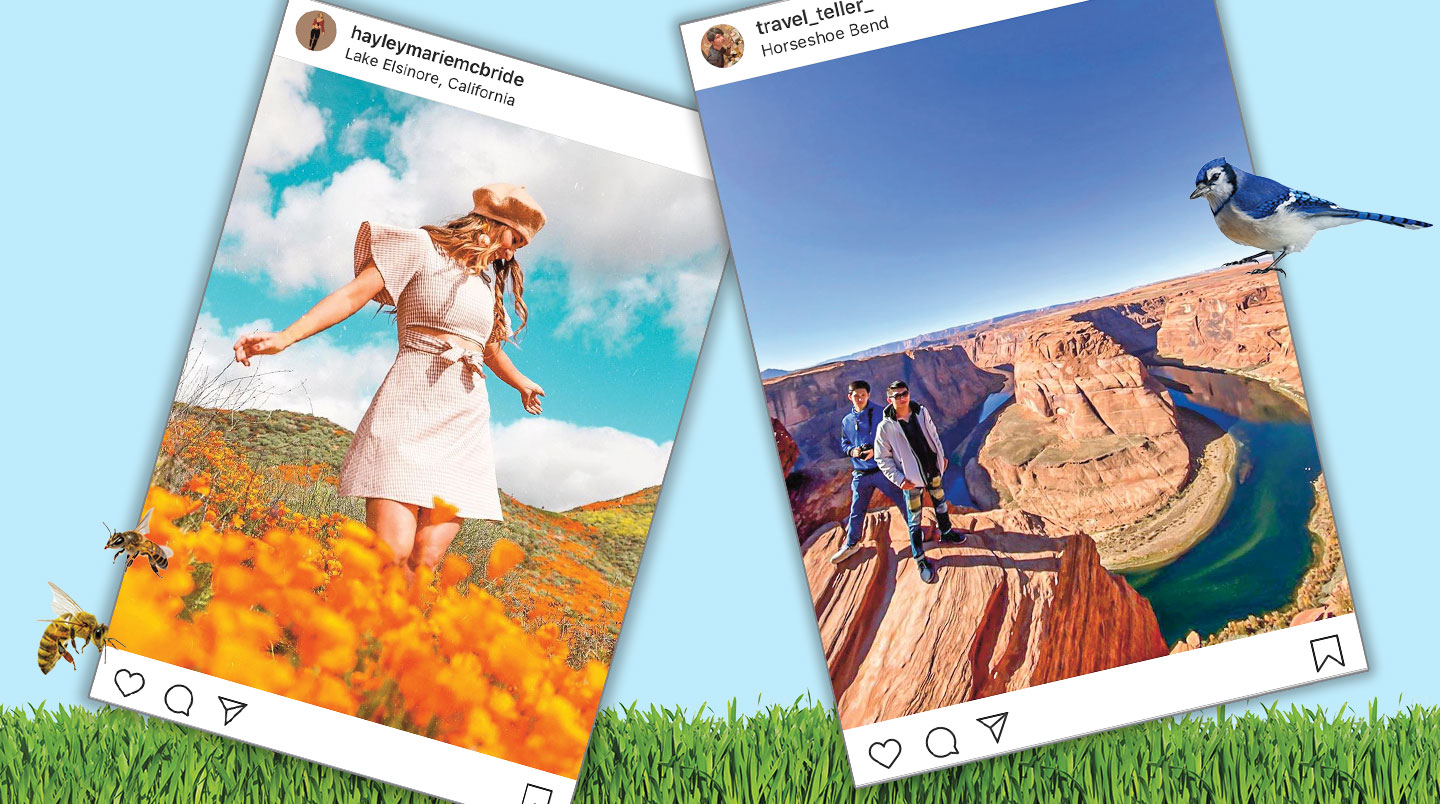Last spring, the residents of Lake Elsinore, California, were facing a crisis: an explosion of picture-perfect poppies in the Temescal Mountains, just northwest of town. But the problem wasn’t the flame-orange flowers—it was the hordes of smartphone-carrying visitors coming to take photos of them.
During one weekend alone, as many as 100,000 poppy seekers crowded into the town of 50,000. The sightseers brought with them bumper-to-bumper traffic. Some even damaged the poppies by picking them or wandering off designated trails, which can crush the flowers’ roots and prevent future blooms from growing.
What led to the visitor boom? A few weeks earlier, some Instagram influencers had taken pictures with the first poppy blooms. (An influencer is someone with a huge social media following who sometimes makes money by posting about places and products.) Many of their posts included geotags, GPS locations that show precisely where photos are taken.
As the poppy images spread across social media, hundreds of thousands of people were inspired to visit the same spots outside Lake Elsinore to snap stunning selfies of their own.
This California town isn’t the only place concerned about social media’s impact on the local environment. Geotagged posts are driving up tourism in public lands across the United States. Although visitors can help boost an area’s economy or even raise awareness about sites that need protection, many lesser-known nature spots aren’t equipped to handle large crowds. And that’s putting everything from plants to wild animals at risk.
Last spring, the residents of Lake Elsinore, California, faced a crisis. There was an explosion of picture-perfect poppies in the Temescal Mountains, just northwest of town. But the problem was not the flame-orange flowers. It was the crowds of visitors with smartphones, coming to take photos of the flowers.
During one weekend alone, as many as 100,000 poppy seekers crowded into the town of 50,000. The sightseers caused heavy traffic on the roads. Some visitors even damaged the poppies by picking them or wandering off marked trails. This can crush the flowers’ roots and keep future blooms from growing.
What led to the visitor boom? A few weeks earlier, some Instagram influencers had taken pictures with the first poppy blooms. (An influencer is someone with a huge social media following who sometimes makes money by posting about places and products.) Many of the influencers’ posts included geotags. Geotags are GPS locations that show exactly where photos are taken.
The poppy images spread across social media. That inspired hundreds of thousands of people to visit the same spots outside Lake Elsinore. They wanted to snap stunning selfies of their own.
This California town is not the only place concerned about social media’s impact on the local environment. Geotagged posts are driving up tourism in public lands across the United States. Visitors can help boost an area’s economy or even raise awareness about sites that need protection. But many lesser-known nature spots are not equipped to handle large crowds. And that is putting everything from plants to wild animals at risk.

